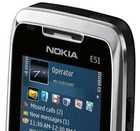Here’s a great story about how Lauri Malkavaara, a journalist for the Helsinki Sanomat newspaper, tried to save his country’s mobile phone company. You can read Lauri’s entire article here. I’ll paraphrase and quote a few excerpts. [The emphasis is mine—highlighting the lovely way he describes the phone’s usability issues.]
 On August 18, 2008, Lauri wrote a letter to Nokia providing his feedback about the design of Nokia E51 phone he had just been given to use by his employer.
On August 18, 2008, Lauri wrote a letter to Nokia providing his feedback about the design of Nokia E51 phone he had just been given to use by his employer.
Dear Nokia:
“… .Last week my second mobile phone broke and my employer bought me the third mobile phone that I have ever had in my life. I have wondered about it for a week now. At first I did not even know how to call with it without the manual, and I still do not understand very much of it.
The problem is that half a year ago a friend of mine at work showed me a device manufactured by Apple called the iPod Touch. I fell in love instantly… I ordered my own iPod touch, turned it on, and knew immediately how to use it. I have used the device now on a daily basis for over six months, and I have not even thought about any manuals…. It is no wonder that it is a huge success all over the world.
My new Nokia telephone model is called the E 51. Unfortunately the phone has not been designed so that just anybody could learn to use it easily…..”
“It turned out that I should first have known that I was supposed to pick Tools, and from there go to settings and from there to general, and from there to personalisation, and from there, finally I could find what I had been looking for: Tones. So I would have needed to make five insightful choices in a downward hierarchy before I could have done something with my telephone that is the first thing that every new user of a telephone wants to do.“
“First I had a choice of 12 keys. If we assume that beneath each of the keys – on each hierarchical level – there is an average of 10 new keys, the changing of the ringtone was hidden at a hierarchical level in which there are 120 000 different possible choices. Consequently, in a random search I would have had a 1/120 000 chance to find the right one…“
“And then there is another, different example: I send a text message, which is something that I do dozens of times every day. First, I press messages, then I select create message, and then I need to choose from among four options: text message, multimedia message, audio message, or e-mail. So each time, dozens of times a day in the years that follow, I am bothered by this extra message, and each time I give the same answer.”
“I would venture to say that this is the case with others. I estimate that out of every 1 000 messages sent, 999 are ordinary text messages. It is as if my telephone had not been designed in such a way that it would make it as easy as possible to do what I am doing with it all the time, and that instead, the telephone is constantly advertising to me all of the amazing things that I could do with it.“
“A telephone is mostly used for making calls and sending text messages. It would be crucially important for these features to be designed so that the user can perform the tasks with a minimum amount of button pressing – in other words, quickly.”
“Summary: By putting a telephone like the E 51 onto the market, Nokia has squandered its most important legacies: to produce telephones in such a way that they are easy to use. This will cause problems for Nokia.”
Sincerely, with friendship and concern,
Lauri Malkavaara
(This letter was sent to Nokia on August 18, 2008.)
“And what happened then? When I finished the letter, I sent it right away to Nokia’s e-mail address. The next day my telephone rang, and on the following days it rang again several times. Nokia bosses started calling me, wanting to explain Nokia’s strategy….”
“One of the bosses was unyielding, and wanted to meet with me…”
“The executive started to explain the backgrounds of Nokia’s strategy to me. The idea was that people are different, and therefore, they need different kinds of telephones. I became agitated: ‘The kind of person who wants to use a bad telephone does not exist’, I said…”
Suddenly he went silent. He continued: ‘I agree completely with everything that you wrote in your letter and what you have said now…’
‘I completely agree with you and I want to apologise on behalf of Nokia for producing a bad telephone for you.’
Lauri Malkavaara had occasion to meet the same executive years later, and they talked about the various missteps that Nokia had made.
“He told me that when the iPhones came out in the United States in the summer of 2007, the situation was followed closely at Nokia. A courier immediately brought a large number of iPhones to Nokia’s head offices in Espoo.
The director brought his own iPhone home that same evening. He studied it so enthusiastically that his four-year-old daughter also became interested.
As an experiment, he gave the telephone to his daughter, and she learned to use it immediately.
In the evening as the parents were going to bed, the drowsy four-year-old appeared at their bedroom door with a question: “Can I take that magic telephone and put it under my pillow tonight?”
That was the moment when the Nokia executive understood that his company was in trouble.”
~ Lauri Malkavaara, Helsinki Sanomat



